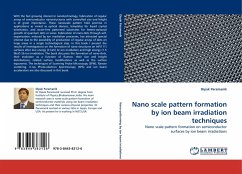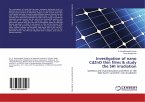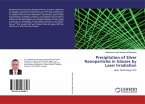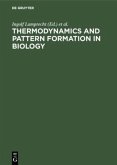With the fast growing interest in nanotechnology, fabrication of regular arrays of semiconductor nanostructures with controlled size and height is of great importance. These nanoscale pattern hold promise in applications as varied as optical devices, templates for liquid crystal orientation, and strain-free patterned substrates for hetero-epitaxial growth of quantum dots or wires. Fabrication of nano-dots through self-organization, induced by ion irradiation processes, has attracted special interest due to the possibility of production of regular arrays of dots on large areas in a single technological step. In this book I present the results of investigations on the formation of nano-structures on InP(111) surfaces after low energy (3 keV) Ar ion irradiation and high energy (1.5 MeV) Sb ion irradiation. The book discusses the formation of nano-dots, their evolution as a function of fluence, their size and height distributions, related surface modifications as well as the surface exponents. The techniques of Scanning Probe Microscopy (SPM), Raman scattering, X-ray Photo-electron Spectroscopy (XPS) and ion beam accelerators are also discussed in this book.








